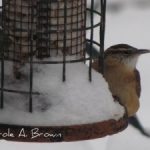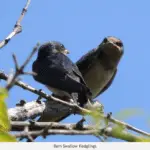Funny how life works out sometimes. Although I have a love/hate relationship with Facebook, it has allowed me to meet some cousins I’d never met before, first on Facebook and then in person this last weekend for a family reunion.
I was introduced to Beverly Kehs and Judie Kehs Much on Facebook by my Uncle Clayt several years ago. After becoming friends with them on Facebook, another cousin contacted me thinking we must be related based on the “Sevilla” part of my name and also because we had mutual cousins in common on our friends lists.
This cousin, Brenda Clements Jones, is first cousins with Beverly and Judie. Their grandmother, Bertha Nase Long is my grandfather Clayton Nase Long’s sister. Brenda is is a certified master naturalist in the state of Virginia, and on the board of directors of the Virginia chapter of the The American Chestnut Foundation. And I’m so honored that she has also joined the team here at Ecosystem Gardening.
A Certified Master Naturalist is a trained volunteer who has completed a course in natural history and ecology and who is committed to promoting conservation and stewardship of natural resources and preserving biodiversity. The certification is typically obtained through a state-specific program that provides training in ecology, wildlife, geology, and other natural science topics, as well as hands-on field experiences. Upon completion of the program and a certification exam, master naturalists are equipped with the knowledge and skills to educate the public and engage in community service projects related to natural resource conservation. The goal of the program is to build a network of knowledgeable volunteers who can share their love of the natural world and help promote conservation and sustainability efforts.
The American Chestnut Foundation (TACF) is a non-profit organization dedicated to the restoration of the American chestnut tree. The American chestnut was once a dominant tree species in the Eastern United States, but a fungal disease called chestnut blight virtually wiped out the species in the early 20th century.
TACF was established in 1983 with the goal of developing a blight-resistant American chestnut tree through a breeding program that combines the genetic resistance of the Chinese chestnut with the desirable characteristics of the American chestnut. The organization has since made significant progress in developing a blight-resistant American chestnut through traditional breeding methods and biotechnology.
In addition to its breeding program, TACF also engages in research, education, and outreach activities aimed at restoring the American chestnut and its ecosystem. The organization works with a network of volunteers, including foresters, naturalists, and concerned citizens, to support its restoration efforts and promote awareness of the importance of the American chestnut to our ecosystem and cultural heritage.
TACF is committed to ensuring the long-term survival of the American chestnut tree and restoring its critical role in the Eastern hardwood forest ecosystem.
More From Ecosystem Gardening:
Submit your review | |








